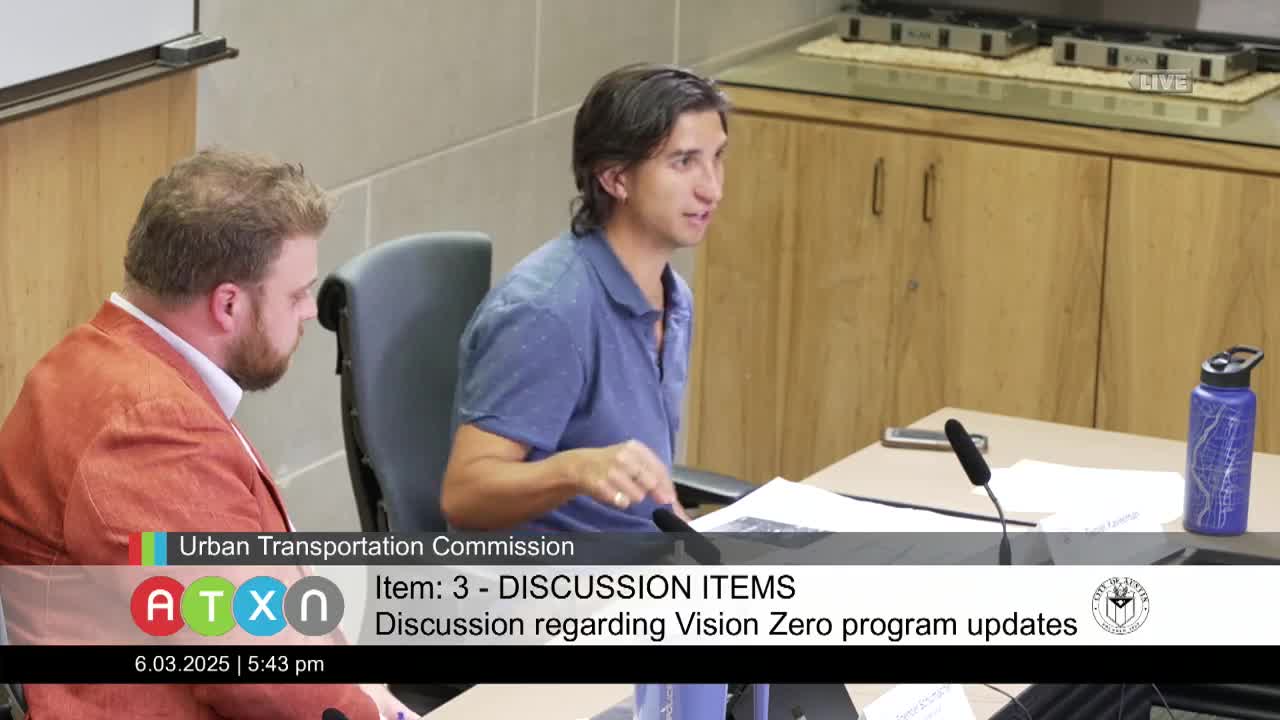Austin launches initiatives to enhance road safety under Vision Zero program
June 03, 2025 | Austin, Travis County, Texas
Thanks to Scribe from Workplace AI , all articles about Texas are free for you to enjoy throughout 2025!

This article was created by AI using a video recording of the meeting. It summarizes the key points discussed, but for full details and context, please refer to the video of the full meeting. Link to Full Meeting
A key point of discussion was the introduction of a new lighting plan intended to improve safety at city-owned facilities. Officials expressed enthusiasm about the progress made in this area, noting that the number of city-owned facilities benefiting from safety improvements has decreased over the years, indicating effective resource allocation.

Before you scroll further...
Get access to the words and decisions of your elected officials for free!
Subscribe for FreeAs the city prepares for the 2026 bond funding cycle, officials were asked about potential wish list items that have not yet received funding. Lighting improvements were identified as a priority, alongside a broader need for additional safety measures. The discussion emphasized that while funding is limited, the focus will be on maximizing the impact of available resources, particularly through lower-cost safety treatments that have shown significant benefits.
Commissioner Persson raised concerns regarding a spike in accidents on non-city roadways, prompting a detailed breakdown of the issue. Officials clarified that these incidents primarily occur on frontage roads and major arterials not owned by the city, such as South Congress and Burnet Road. Collaboration with the Texas Department of Transportation (TxDOT) was highlighted as essential for addressing safety on these roadways, as different entities have varying design guidelines and policies.
The meeting concluded with a commitment to continue monitoring accident data and enhancing communication with TxDOT to ensure that safety measures are effectively implemented across all roadways. The city’s Vision Zero map was mentioned as a resource for tracking accident locations and trends, underscoring Austin's leadership in data transparency and safety initiatives.
Overall, the meeting underscored the city's proactive approach to urban transportation safety, the importance of collaborative efforts with state agencies, and the ongoing challenge of securing adequate funding for necessary improvements.
Converted from Austin - Urban Transportation - Jun 03, 2025 meeting on June 03, 2025
Link to Full Meeting
Comments
View full meeting
This article is based on a recent meeting—watch the full video and explore the complete transcript for deeper insights into the discussion.
View full meeting




